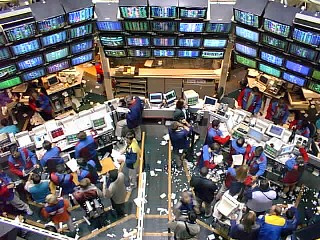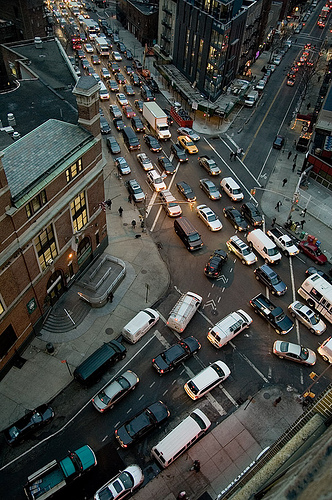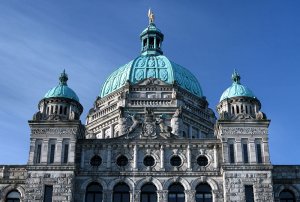The British Columbia Ministry of Finance issued this News Release on April 28. It speaks for itself and requires no comment from the Carbon Tax Center.
N E W S R E L E A S E
For Immediate Release Ministry of Finance
2008FIN0009-000615
April 28, 2008
CARBON TAX GUARANTEES TAX CUTS FOR BRITISH COLUMBIANS
VICTORIA — British Columbia is the first province to implement a comprehensive, revenue-neutral carbon tax – an initiative that returns every dollar raised to the people and businesses of British Columbia as tax cuts, Finance Minister Carole Taylor announced today.
“British Columbia is leading the way in addressing climate change, and the revenue-neutral carbon tax is another pioneering step forward for our province,” said Taylor. “Each step we take to change our habits and behaviours, as individuals and as a community, will help leave a legacy that our children and grandchildren can be proud of.”
By tying the carbon tax to reductions in personal and business taxes, the Province is giving the people of British Columbia the power to make their own choices.
“Pricing carbon sends a clear message that there is a cost to the environment involved in emitting carbon,” said Taylor. “Leading economists and scientists agree that introducing a revenue-neutral carbon tax is the right thing for our province, today and for the future. We took time to design a model that protects low-income families and moves British Columbia to being one of the lowest-taxing provinces in Canada.”
In the first three years, the carbon tax is estimated to generate $1,849 million in revenue, which will be returned to British Columbians as follows:
The bottom two personal income tax rates will be reduced for all British Columbians, resulting in a tax cut of two per cent in 2008, rising to five per cent in 2009 on the first $70,000 in earnings – with further reductions expected in 2010: $784 million.
Effective July 1, 2008, the general corporate income tax rate will be reduced to 11 per cent from 12 per cent – with further reductions planned to 10 per cent by 2011: $415 million.
Effective July 1, 2008, the small business tax rate will be reduced to 3.5 per cent from 4.5 per cent – with further reductions planned to 2.5 per cent by 2011): $255 million.
Beginning July 1, 2008, the new Climate Action Credit will provide lower-income British Columbians a payment of $100 per adult and $30 per child per year – increasing by five per cent in 2009 and possibly more in future years: $395 million.
Total tax cuts over three years:$1,849 million.
This groundbreaking legislation is supplemented by an immediate Climate Action Dividend, $100 for every man, woman and child in British Columbia. This dividend, which will further support our community’s ability to make greener choices, will go out to residents of British Columbia starting in late June.
For further information about the carbon tax and ideas for making greener choices, please visit:
http://www.bcbudget.gov.bc.ca/2008/backgrounders/backgrounder_tax_impacts.htm
Media Contact
Finance Communications
Public Affairs Bureau
250 387-5013
For more information on government services or to subscribe to the Province’s news feeds using RSS, visit the Province’s website at www.gov.bc.ca.

 Why is setting a price (or tax) for emissions more efficient than a cap? Because reducing greenhouse gas emissions is more like a marathon than a sprint. The cost of cutting emissions tends to go up with each additional reduction, while the benefit remains essentially constant. (Every ton of CO2 has the same heat-trapping effect.)
Why is setting a price (or tax) for emissions more efficient than a cap? Because reducing greenhouse gas emissions is more like a marathon than a sprint. The cost of cutting emissions tends to go up with each additional reduction, while the benefit remains essentially constant. (Every ton of CO2 has the same heat-trapping effect.) The year-long effort to enact congestion pricing in New York City had a lot going for it:
The year-long effort to enact congestion pricing in New York City had a lot going for it: Here are excerpts from the Wall Street Journal story, spiced with our commentary.
Here are excerpts from the Wall Street Journal story, spiced with our commentary. The article ends months of speculation that Bloomberg, a self-made billionaire who has emphasized a managerial, non-partisan approach to governing, would enter the race as an independent.
The article ends months of speculation that Bloomberg, a self-made billionaire who has emphasized a managerial, non-partisan approach to governing, would enter the race as an independent. While Nader has been roundly criticized and even ridiculed as a spoiler and perennial candidate (Nader was the Green Party candidate for president in 1996 and 2000, and he ran as an independent in 2004), his campaign platform includes unambiguous support for a carbon tax. “Adopt a carbon pollution tax” is Issue #6 on Nader’s campaign issues page,
While Nader has been roundly criticized and even ridiculed as a spoiler and perennial candidate (Nader was the Green Party candidate for president in 1996 and 2000, and he ran as an independent in 2004), his campaign platform includes unambiguous support for a carbon tax. “Adopt a carbon pollution tax” is Issue #6 on Nader’s campaign issues page, 
 The good news is two-fold. One, CTC has established a very solid foundation. Two, there is widespread support for revenue-neutral carbon taxes across the political spectrum from economists, business leaders, pundits and other opinion leaders. Just take a look at our
The good news is two-fold. One, CTC has established a very solid foundation. Two, there is widespread support for revenue-neutral carbon taxes across the political spectrum from economists, business leaders, pundits and other opinion leaders. Just take a look at our  A December 16 article in the Miami Herald,
A December 16 article in the Miami Herald,